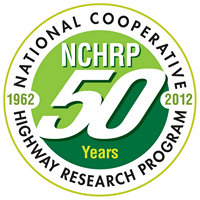Funding
The National Cooperative Highway Research Program was established in 1962 under TRB. Governments needed to tackle what Rex M. Whitton termed “clearly a supreme challenge to research”: moving people and goods in cities by using a fixed percentage of highway funding dedicated to research. Whitton envisioned that this research would encompass studies of human behavior, land use, employment, and new technologies. [1] Another anecdote contributing to NCHRP's founding comes from the late 1950s when it was noted that 32 state DOTs were researching the same topic without any knowledge of each other’s work. This revelation provided incentive for the states to pool their resources on a national research program addressing common problems. The extent of duplicative and isolated research was mentioned in a conversation between Edward Holmes of the Bureau of Public Roads (BPR) and Alfred E. Johnson, the American Association of State Highway Officials (AASHO) executive director at the time. [2]
It is sponsored by American Association of State Highway and Transportation Officials (AASHTO) and the U.S. Department of Transportation's Federal Highway Administration (FHWA). This program is funded by all the state highway and transportation departments. [3] State departments of transportation are requested to contribute 5.5% of their State Planning and Research (SP&R) funds each year. Annual NCHRP funding has been approximately $37 million in recent years. [4]
FHWA provides the funds to the NCHRP through a cooperative agreement with the National Academy of Sciences, the parent organization of the Transportation Research Board. [4]
This page is based on this
Wikipedia article Text is available under the
CC BY-SA 4.0 license; additional terms may apply.
Images, videos and audio are available under their respective licenses.

